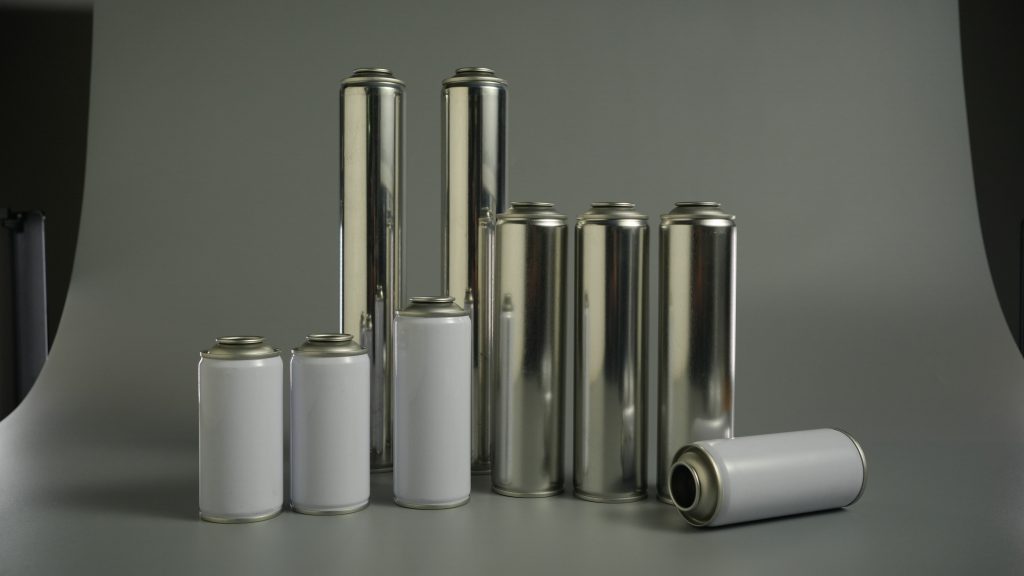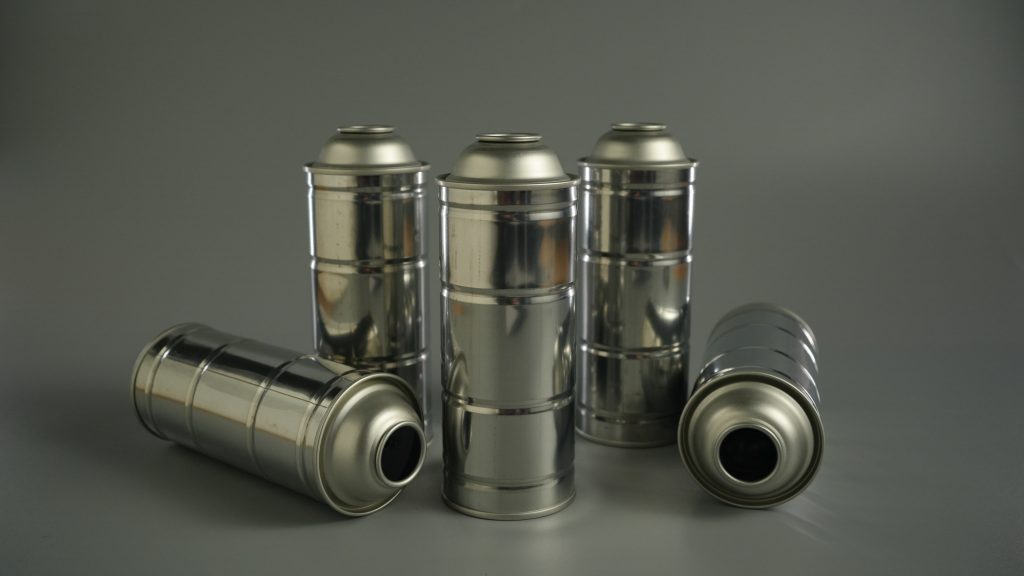
You might have wondered why most aerosol cans feel metallic and sturdy. The secret lies in the material they’re made from—tinplate. But what exactly is tinplate? Many people aren’t familiar with this term. In simple terms, tinplate is a thin steel sheet coated with a layer of tin, which is why it’s often referred to as tin-coated steel. This special coating gives the material its unique properties—strength, corrosion resistance, and flexibility.
Inside an aerosol can, products like deodorants, paints, or whipped cream are stored under high pressure. These contents are pressurized using gas compressors, forming a fine mist when released. The pressure inside the can is significantly higher than the outside air pressure, which allows the content to be sprayed out as a nano-level mist. But this also means the container must be extremely strong—otherwise, it could deform or even explode.
That’s why metal materials are the top choice for aerosol packaging. You might think of stainless steel—it’s robust, rust-resistant, and durable. So why isn’t it used more often? The answer lies in cost. Stainless steel is expensive. On the other hand, tinplate offers similar advantages: high rigidity, excellent corrosion resistance, and strong sealing capabilities. What’s more, it’s highly malleable. Manufacturers can use molds to create aerosol cans in various shapes—round, square, spherical, or even custom designs. And importantly, tinplate is the most affordable material in the metal packaging industry.

Let’s think together:
Q: Why not use aluminum or stainless steel instead?
A: While aluminum is lightweight and stainless steel is ultra-durable, tinplate strikes the best balance between performance and cost. It’s perfect for mass production!
Another key advantage is that tinplate is eco-friendly. It’s fully recyclable, which aligns with modern sustainable packaging trends.
Pressure Standards for Aerosol Cans
Aerosol cans are categorized based on their pressure resistance: general pressure, medium pressure, and high pressure. There’s also a dot pressure standard used mainly in the U.S., denoted as 2N, 2P, and 2Q.
- General Pressure: Deformation pressure ≥ 1.20 MPa, burst pressure ≥ 1.40 MPa
- Medium Pressure: Deformation pressure ≥ 1.60 MPa, burst pressure ≥ 1.80 MPa
- High Pressure: Deformation pressure ≥ 1.80 MPa, burst pressure ≥ 2.00 MPa
U.S. Dot Pressure Standards:
- 2N: Deformation pressure ≥ 1.00 MPa, burst pressure ≥ 1.45 MPa
- 2P: Deformation pressure ≥ 1.10 MPa, burst pressure ≥ 1.65 MPa
- 2Q: Deformation pressure ≥ 1.24 MPa, burst pressure ≥ 1.86 MPa
These standards ensure that aerosol cans remain safe under high pressure—whether they contain hairspray, cooking oil, or insect repellent.
Fun Fact: Did you know?
The term “aerosol” refers to tiny particles suspended in gas. When you spray an aerosol can, you’re actually releasing millions of nano-sized particles!
So, the next time you use a spray can, remember—it’s not just a container; it’s a highly engineered product designed for safety, efficiency, and sustainability. Tinplate might not be a household name, but it’s everywhere around us, making daily life more convenient.


